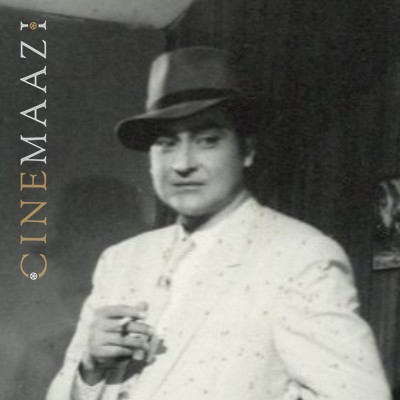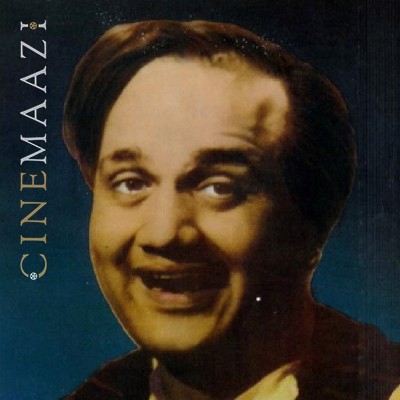Geeta Dutt

Subscribe to read full article
This section is for paid subscribers only. Our subscription is only $37/- for one full year.
You get unlimited access to all paid section and features on the website with this subscription.
Not ready for a full subscription?
You can access this article for $2 , and have it saved to your account for one year.
- Real Name: Geeta Ghosh Roy Chowdhuri
- Born: 23 November 1930 (Faridpur, East Bengal)
- Died: 20 July, 1972
- Primary Cinema: Hindi
- Spouse: Guru Dutt
- Children: Tarun Dutt, Arun Dutt, Nina Dutt
One of the most naturally gifted singers to grace Indian cinema, Geeta Dutt mesmerized audiences with the incredible range of emotions her voice was able to convey. Having the ability to be mischievously playful and achingly painful, her prodigious talent made her one of the premiere playback artistes of the 50’s. According to music critic Raju Bharathan, Geeta Dutt may have been the only singer Lata Mangeshkar ever feared could upstage her.
Born on 23 November 1930 in Faridpur Geeta Ghosh Roy Chowdhuri was the daughter of a rich zamindar. When she was 12 years old, her parents shifted to an apartment in Dadar in Bombay in 1942. One day as Geeta was singing in their apartment she was overheard by music composer Pandit Hanuman Prasad who used to visit Pandit Gowri Shankar who had his dancing school in the same building. Stunned by her singing ability, he agreed to train her to improve her singing technique. He also allowed her to sing multiple lines as part of the chorus for as many as four songs in Bhakta Prahlad (1946). While her role in the soundtrack was minuscule, it was enough to convince S D Burman to have her sing in Do Bhai (1947).
The music of Do Bhai was hugely successful, especially due to Geeta’s thrilling vocal performance on Mera sundar sapna beet gaya. Bolstered by this success, Burman had her sing five solos in his next project, Dil Ki Rani (1947). She also sang for Anil Biswas in Milan (1947) as well as for C Ramchandra (Leela, 1947) and Hansraj Behl (Chunariya, 1948). She sang in Gemini Productions’ spectacular Chandralekha (1948) for S Rajeshwara Rao. 1949 proved to be a watershed year in her career. She did at least 25 films that year, working for all the top music composers in the industry. While her reign at the top was short-lived due to the arrival of Lata Mangeshkar, she was one of the few singers to hold her own against her.
The film Baazi (1951) gave her career renewed vigour. The soundtrack of Baazi felt fresh and inventive and songs like Tadbir se bigdi hui taqdeer banale were on everyone’s lips. It was also during the shooting of this film that she met Guru Dutt and fell in love with him. They married on 26 May 1953. She continued to be extremely busy through 1952 and 1953, working in films like Hamari Shaan (1951), Shabistan (1951), Pyar Ki Baaten (1951), Bahaar (1951), Naujawan (1951), Anand Math, Anjaam, Jaal, Mr. Sampat, Kafila, Ratnadeep and Zalzala (all 1952).
O P Nayyar was the one to give Geeta Roy her next big hit with Aasman (1952). Songs like Pom pom pom baja dole and Dil hai diwana attained great popularity. In 1953 she sang seven songs for Guru Dutt’s Baaz, under the direction of Nayyar. The music proved to be the only saving grace for the film as it sank in the box office. She was truly able to showcase the incredible range of her voice in songs like Zara samne aa and Aye dil aye diwane. Their next collaboration in the superhit Aar Paar (1954) gave classics like Babuji dheere chalna, Hoon abhi main jawan and Ja ja ja bewafa. They continued to work well together in Guru Dutt’s films as Mr & Mrs ‘55 (1955) was to show. She also sang for Hemant Kumar in the film Shart (1954) creating the song Na ye chand hoga.
Her marriage and family commitments put a lot of strain on her singing career and she began working less and less during this time. She still remained an S D Burman favourite, singing for him in films like Nau Do Gyarah (1957), the unforgettable Pyaasa (1957), Paying Guest (1957) and Sitaron Se Aagey (1958). Geeta’s performances in Pyaasa cemented her place as one of the greatest vocal talents of Hindi cinema. While Burman started working more with Lata Mangeshkar and Asha Bhosle, Geeta continued singing for him occasionally in Lajwanti (1958), Kaagaz Ke Phool (1959), Sujata (1959), Kala Bazar (1960) and Ziddi (1964). Her performance in Waqt ne kiya kya haseen sitam is particularly memorable. By this time though her troubled marriage with Guru Dutt had started taking a toll on her mental health and she had started drinking heavily.
Her incredible versatility allowed her to transcend the borders of Hindi cinema and branch out into Bengali, Gujarati and Marathi cinema as well. Beginning with Samar (1950), she quickly established herself in the Bengali film industry. But her greatest successes came with Nishiraat banka chand akashe from Prithibi Amare Chay (1957), Tumi je amar from Harano Sur (1957) and Jhanak jhanak kankon baje, Ogo shundoro jaano naki and Neer chhoto khoti nei from Indrani (1958). She worked extensively with Hemanta Mukherjee and Kanu Ghosh (mostly non-film songs with the latter). Her repertoire included some successful films like Sathihara (1961), Shonar Horin (1959) and Hospital (1960), as well as singing a wealth of non-film adhunik songs.
Her work in Gujarati cinema, though relatively lesser-known, was also incredibly varied. She was known to collaborate particularly with Avinash Vyas whose Gunasundari (1948) was a massive hit. The songs Have thoda thoda thaav vara and Aaj mari nanadii endeared her to Gujarati audiences. By 1950 she had become an incredibly sought after talent in Gujarat. Some of her notable films were Parnetar (1951), Naagdevta (1955) and Vidhata (1956). Between 148 and 1967 she worked in as many as 25 Gujarati films.
In Marathi, she sang two songs for composer G N Joshi, written by the poet Vasant Bapat, which became incredibly popular. She also sang for the film Swapna Techa Lochani (1967).
While their marriage was on the rocks, Guru Dutt had attempted to launch her as a heroine with a Bengali film Gouri (1957), but it never got made. By 1963 she was separated from her husband and mentally in a bad way. Guru Dutt’s death in 1964 dealt her a heavy blow. She suffered a mental breakdown and her alcohol abuse problems worsened. She had recovered somewhat by 1965 and tried to find work again. She worked with old collaborators Bulo C Rani, and Hansraj Behl and some minor films between 1966-69. She also acted as the lead in a Bengali film Badhubaran (1967) opposite Pradeep Kumar. She sang a song for Shankar Jaikishan for the Sajan Ki Galiyan (1968) which ultimately ended up being used in Film Hi Film (1983). Possibly her last significant work was in Kanu Roy’s Anubhav (1971) soundtrack, with songs like Koi chup ke se aake and Meri jaan mujhe jaan na kaho reminding music lovers what truly made her a special talent. The last film she sang for was Midnight (1972) before she passed away due to cirrhosis of the liver on 20 July 1972.
Geeta Roy Dutt remains one of the most ethereal voices to feature on a film soundtrack. While her personal demons claimed her before her time, her work is immortal for music lovers all over the world.










.jpg)



